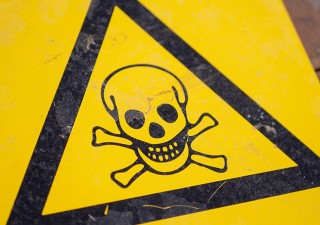India: The missing elements in the patent specification
31 July 2023

The patent law in every jurisdiction mandates that the patentee fully and particularly disclose the invention in the patent specification filed along with the application. It is also essential that the disclosure in the specification contains enabling information to ensure unhindered public access to practice the invention after the expiry of the term of a patent. This enabling description amounts to full scientific disclosure that performs two statutory functions.
Firstly, it clearly defines the novelty of the invention. Secondly, it ensures unhindered public access to old technology after the expiry of the term of the patent. However, the amount of information, particularly scientific information, sufficient to obtain a patent is not specified in the law as it is a known fact that some inventions are not fully understood at the time of the filling of the patent application. In certain situations, the difference or missing element may amount to a separately patentable invention.
For example, the patent for the metabolite of terfenadine was found later and patented. The later patent suffered invalidity issues (in the UK) and enforceability issues (in Germany and the United States). However, the inventions that are fully described and fully enabled within the meaning defined by patent law, but not fully understood, remained at the vertex of the controversy and continue to present problematic enforceability and validity issues in many jurisdictions.
Finding the missing element later
The patent eligibility of the missing element never posed any problem later for the original patentee where such missing element or component amounts to more than a mere scientific theory or discovery and is susceptible to obtaining a separate patent protection. The discoverer of the missing element or component can obtain a patent as in the terfenadine case, where a patent for metabolite was granted later (TAM case). The first U.S. Patent No. 3,878,217 (terfenadine application) was filed on July 12, 1973, and granted on April 15, 1975. The second patent popularly known as the TAM patent (U.S. 4,254,129) was filed on April 10, 1979, and issued on March 3, 1981. The gap between the two patents was about seven years.
Missing elements found by others
If the missing element found later is patented by the patentee, it poses no novelty issues for the patentee as the missing element is understood to be distinct and different from the original claimed product. In patent law, such inventions are considered to be novel and hence patentable. Where the missing element is found by the third party, the issue of novelty is invariably raised by the original patentee or other opponents. In such cases, an argument is placed before the court that even if an element of an invention is missing from a prior art document, the document can still anticipate the invention in either of two ways: if the missing element is “incorporated by reference” into the document from another source, or if the missing element is deemed to be “inherent” in the document.
Fate of the TAM Patent
The TAM patent was invalidated by the UK court by interpreting the novelty provision to find that the earlier patent had put information about the terfenadine metabolite into the public domain, despite not publicly teaching the “missing element” in the patent specification. Though the validity of terfenadine metabolite was challenged in the U.S., Germany and the UK, the UK decision was the only decision to squarely address the question of validity. The question before courts in the U.S., Germany and the UK in the Merrell Dow terfenadine metabolite case was to find that either the TAM patent was not valid and/or not infringed. The courts in this case noted that if it found otherwise, it would have effectively extended Merrell Dow's monopoly beyond the term of the original, expired patent for terfenadine itself. This was achieved by finding that the use of terfenadine is not an infringement of the TAM patent for different reasons in Germany and the United States. The court in Germany made a sweeping statement limiting the scope of the claims so that they did not encompass the Terfenadine of the expired patent. In the United States, the court construed the word “compound” to be limited to synthetic TAM and therefore excluded the natural TAM produced in vivo by the metabolic breakdown of terfenadine.
Fate of the desloratadine patent
In Schering Corp. v. Geneva Pharmaceuticals, 339 F.3d 1373, 1374 (Fed. Cir. 2003) case, Schering obtained U.S. Patents 4,282,233 (granted in 1981) and 4,659,716 (granted in 1987) for antihistamines. Antihistamines inhibit the histamines that cause allergic symptoms. Schering had obtained, in August 1981, U.S. patent ’233 for loratadine, a new non-drowsy antihistamine, and related drug products and a method of use; loratadine is the active ingredient in Claritin. In a very similar fact situation to the Merrell Dow case, Schering continued their research and later identified desloratadine as another ingredient, for which they were awarded a patent in April 1987.
This so-called missing research element was not known to Schering and others at the time that loratadine is metabolized in the liver to form desloratadine. When former patent ’233 was nearing the term of expiry, many generic manufacturers sought approval from FDA to market Claritin which contains loratadine as claimed in ’233. This patent expired but the desloratadine patent ’766 was in force until April 2004. When Schering sued the generic drug manufacturers for infringement of that patent on the ground that the loratadine in the generic formulations would be converted in the body to desloratadine and this would constitute infringement of its desloratadine patent, the generic drug manufacturers raised a defence of inherent anticipation and contended that even though Schering or others for that matter did not know that loratadine would be metabolized by the body to form desloratadine, the loratadine patent inherently discloses desloratadine, thereby rendering the desloratadine patent invalid.
The Federal Circuit held that the loratadine patent contained an enabling disclosure of “a metabolite of loratadine,” namely desloratadine:
“An anticipatory reference need only enable subject matter that falls within the scope of the claims at issue, nothing more. To qualify as an enabled reference, the [loratadine patent] need not describe how to make [desloratadine] in its isolated form. The [loratadine patent] need only describe how to make [desloratadine] in any form encompassed by a compound claim covering [desloratadine], e.g. [desloratadine] as a metabolic in a patient's body. The [loratadine patent] discloses administering loratadine to a patient. A person of ordinary skill in the art could practice the [loratadine patent] without undue experimentation. The inherent result of administering loratadine to a patient is the formulation of [desloratadine]. The [loratadine patent] thus provides an enabling disclosure for making [desloratadine].”
The Federal court affirmed the findings of the lower court that U.S. Patent No. 4,282,233 (the ’233 patent) inherently anticipates Claims 1 and 3 of the ’716 patent. Thus, the later patent was declared invalid.
Doctrine of inherency and anticipation
The patent offices and courts usually apply the doctrine of inherency under certain circumstances where prior art may be relied upon not only for what it expressly teaches but also for what is inherent therein, i.e., what necessarily flows from the express teachings. Therefore, to find that a claim is anticipated, one must determine if a single prior art reference, either expressly or inherently, discloses every feature of the claimed invention.
The doctrine of inherency is predicated on the concept that a claim will not pass the test of anticipation merely because a feature of it is undisclosed or unrecognized in the cited prior art. A prior art would still be anticipated if a missing element of the claim is inherent in the cited prior art. To be precise, if an examiner relies on the doctrine of inherency, he must substantiate it with a basis in fact and/or technical reasoning that supports such a determination. The allegedly inherent characteristic would be deemed to be present even if the inherent features were not recognized. Therefore, to establish inherency, the evidence must be clear and convincing to establish that the missing matter is necessarily present in the cited prior art. In any case, inherency cannot be established by probabilities or possibilities. The doctrine of inherency is invariably invoked by the examiner in nearly all patent jurisdictions where the patentee tries to obtain a product patent for a product that had been unintentionally invented earlier.
Limits of enabling disclosure?
In a similar fact situation in Minnesota Mining & Manufacturing Co.’s (suspension aerosol formulation) patent, [1999] RPC 135 (Pats. Ct) case, the UK court held that it was only necessary for the disclosure to enable a skilled person to make the prior art compound, and not the previously unknown form of the compound which contrasts with the U.S. court finding (desloratadine case) that the disclosure is enabling for the previously unknown desloratadine. In such a paradox situation the patent offices and courts in other jurisdictions should reconcile and address the public policy objectives of ensuring that the public is free to use technology in the public domain, even if it is incompletely understood and where a missing element may require considerable research, should public policy provide a reward for finding that missing element, in the form of a patent grant?
Right of the public to use expired patents
The other side of the argument for the patenting of missing elements says that any invention disclosed in the patent specification may not completely characterize the invention. In certain inventions relating to new technologies, there can be a substantial gap between an “enabling disclosure” and a complete “scientific disclosure”. In case any person simply carries out directions of an invention as disclosed in the specification in the public domain and for which any patent rights have expired, then that use of the invention cannot be limited or restricted by a later or second patentee who uncovers some missing element of the invention and obtains a patent for it as happened in the Merrell Dow situation or the situation in the U.S. Schering case. In both cases where a first patent was issued for the first drug, it was later discovered that the first drug is metabolized into a metabolite in the human body.
Conclusion
Fundamentally, the novelty standards of many patent jurisdictions serve a dual function. The first function is to ensure that patents are only granted for new inventions. The second function is to ensure public access to old technology without any restriction. This by implication means that the patents after their expiry of term fall into the public domain. The concern we discussed here is a very specialized fact situation where there is a first invention that has some missing element or component and this missing element or component may be identified later with the potential patent candidate. This missing element or component must amount to more than a mere scientific theory or discovery and it should be susceptible to separate patent protection.
What happens when the discoverer of the missing element or component obtains patent protection with claims that have the potential to curtail or limit the practice of the original patent already expired? If we see patent results similar to those in the Merrell Dow case, we will find such an attempt failed in all the jurisdictions when the TAM patent was challenged.
Now the question arises how the patentee can seek protection for the missing elements or components in a patent specification? One way to seek an enforceable patent is to obtain a patent of addition, particularly in India under Section 58 of the Patents Act, 1970. Another way is to prove that the metabolite so obtained has enhanced efficacy under Section 3(d).
If the inventor is allowed to obtain an independent patent, he would be encouraged to carry out further research and development into inventions that are not fully understood. That would necessarily require that a reward in the form of effective and enforceable patent protection be provided for any element of known technology that is identified later and is patentable. Yet another line of action is to accommodate what appears to be an acceptable public expectation that, upon expiry of a first patent, the public should have the right to free use of the invention, and more generally that the public should have ongoing and unfettered access to any technology in the public domain, even if it is not fully understood.
The patentability for the second patent for the missing element (unknown element) is not normally questionable in many jurisdictions. In the Indian situation, metabolites are non-patentable unless they show enhanced therapeutic efficacy under Section 3 (d). The examiner in India normally invokes the doctrine of inherency, where an inventor tries to obtain a product patent for a product that had been unintentionally invented earlier.
Moreover, a patent applicant may perhaps resort to invoking the doctrine of inherency to respond to a rejection for lack of an adequate written description by showing that the patent application inherently includes the disclosure that is allegedly lacking, thus making good for missing elements. In the absence of any precedence in India, we should keep our fingers crossed where the enforceability of the metabolite patents is tested. However, expert advice would be beneficial where a patent for a missing element (like metabolite) is sought in India under Section 3(d).








